
The analytical engine was a proposed digital mechanical general-purpose computer designed by English mathematician and computer pioneer Charles Babbage. It was first described in 1837 as the successor to Babbage's difference engine, which was a design for a simpler mechanical calculator.

An analog computer or analogue computer is a type of computer that uses the continuous variation aspect of physical phenomena such as electrical, mechanical, or hydraulic quantities to model the problem being solved. In contrast, digital computers represent varying quantities symbolically and by discrete values of both time and amplitude.

An electronic calculator is typically a portable electronic device used to perform calculations, ranging from basic arithmetic to complex mathematics.

The LEO was a series of early computer systems created by J. Lyons and Co. The first in the series, the LEO I, was the first computer used for commercial business applications.
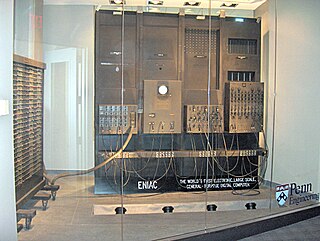
ENIAC was the first programmable, electronic, general-purpose digital computer, completed in 1945. Other computers had some of these features, but ENIAC was the first to have them all. It was Turing-complete and able to solve "a large class of numerical problems" through reprogramming.

Ronald Linn Rivest is a cryptographer and computer scientist whose work has spanned the fields of algorithms and combinatorics, cryptography, machine learning, and election integrity. He is an Institute Professor at the Massachusetts Institute of Technology (MIT), and a member of MIT's Department of Electrical Engineering and Computer Science and its Computer Science and Artificial Intelligence Laboratory.

John William Mauchly was an American physicist who, along with J. Presper Eckert, designed ENIAC, the first general-purpose electronic digital computer, as well as EDVAC, BINAC and UNIVAC I, the first commercial computer made in the United States.

This article presents a detailed timeline of events in the history of computing software and hardware: from prehistory until 1949. For narratives explaining the overall developments, see History of computing.
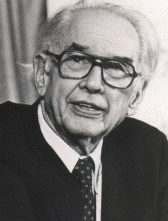
John Vincent Atanasoff,, was an American physicist and inventor credited with inventing the first electronic digital computer. Atanasoff invented the first electronic digital computer in the 1930s at Iowa State College. Challenges to his claim were resolved in 1973 when the Honeywell v. Sperry Rand lawsuit ruled that Atanasoff was the inventor of the computer. His special-purpose machine has come to be called the Atanasoff–Berry Computer.

The Z3 was a German electromechanical computer designed by Konrad Zuse in 1938, and completed in 1941. It was the world's first working programmable, fully automatic digital computer. The Z3 was built with 2,600 relays, implementing a 22-bit word length that operated at a clock frequency of about 5–10 Hz. Program code was stored on punched film. Initial values were entered manually.
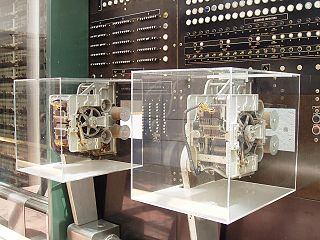
The Harvard Mark I, or IBM Automatic Sequence Controlled Calculator (ASCC), was one of the earliest general-purpose electromechanical computers used in the war effort during the last part of World War II.

The history of computing is longer than the history of computing hardware and modern computing technology and includes the history of methods intended for pen and paper or for chalk and slate, with or without the aid of tables.

A mechanical calculator, or calculating machine, is a mechanical device used to perform the basic operations of arithmetic automatically, or (historically) a simulation such as an analog computer or a slide rule. Most mechanical calculators were comparable in size to small desktop computers and have been rendered obsolete by the advent of the electronic calculator and the digital computer.
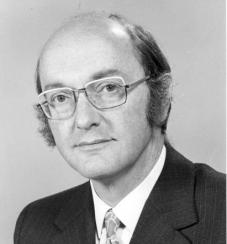
Donald Watts Davies, was a Welsh computer scientist who was employed at the UK National Physical Laboratory (NPL).

Percy Edwin Ludgate was an Irish amateur scientist who designed the second analytical engine in history.
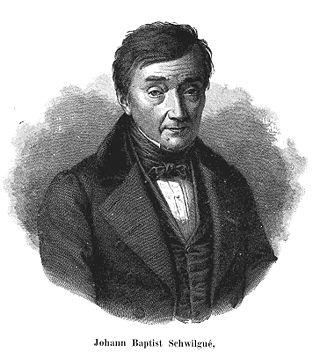
Jean-Baptiste Schwilgué (1776–1856) was the author of the third astronomical clock of Strasbourg Cathedral, built between 1838 and 1843 . In 1844 Schwilgué, together with his son Charles, patented a key-driven calculating machine, which seems to be the third key-driven machine in the world, after that of Luigi Torchi (1834) and James White (1822).
Honeywell, Inc. v. Sperry Rand Corp., et al., 180 U.S.P.Q. 673, was a landmark U.S. federal court case that in October 1973 invalidated the 1964 patent for the ENIAC, the world's first general-purpose electronic digital computer. The decision held, in part, the following: 1. that the ENIAC inventors had derived the subject matter of the electronic digital computer from the Atanasoff–Berry computer (ABC), prototyped in 1939 by John Atanasoff and Clifford Berry, 2. that Atanasoff should have legal recognition as the inventor of the first electronic digital computer and 3. that the invention of the electronic digital computer ought to be placed in the public domain.
Michael Schroeder is an American computer scientist. His areas of research include computer security, distributed systems and operating systems and he is perhaps best known as the co-inventor of the Needham–Schroeder protocol. In 2001 he co-founded the Microsoft Research Silicon Valley lab and was the assistant managing director until the lab was disbanded in 2014.
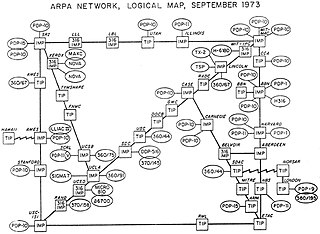
SATNET, also known as the Atlantic Packet Satellite Network, was an early satellite network that formed an initial segment of the Internet. It was implemented by BBN Technologies under the direction of the Advanced Research Projects Agency.
James White was an English civil engineer and inventor. Born in Cirencester, he held an intense interest in mechanics at a young age. Moving to London in the 1780s, he created and patented various inventions, including a differential gear train and a model harbor crane. He moved to Paris in 1792, shortly following the French Revolution, and continued work in designing industrial machinery. Inventions from his period in Paris include an articulated barge, an early out-flow radial turbine, and an automatic wire nail-making machine. He presented a hypocycloidal straight-line mechanism at the 1801 Exposition des produits de l'industrie française at the Louvre, and was awarded a medal by Napoleon Bonaparte. He returned to England following the end of the Napoleonic Wars, and settled in the industrial and manufacturing center of Manchester. He published A New Century of Inventions in 1822, describing in detail over a hundred of his mechanisms from across his career. Notable inventions contained within the work include the earliest known design for a key-driven mechanical calculator. In late 1825, he died at his home in Chorlton-on-Medlock, Manchester.